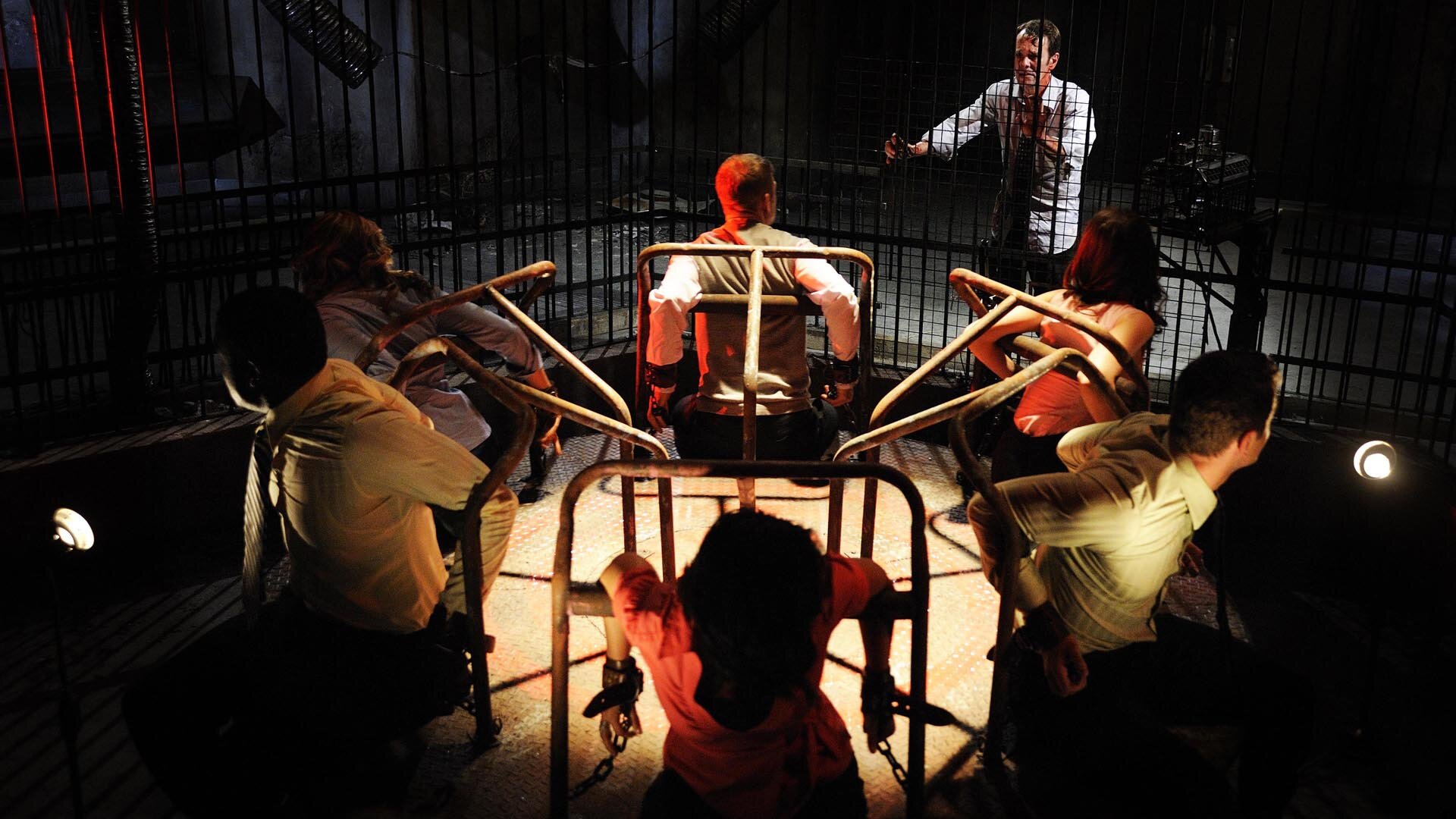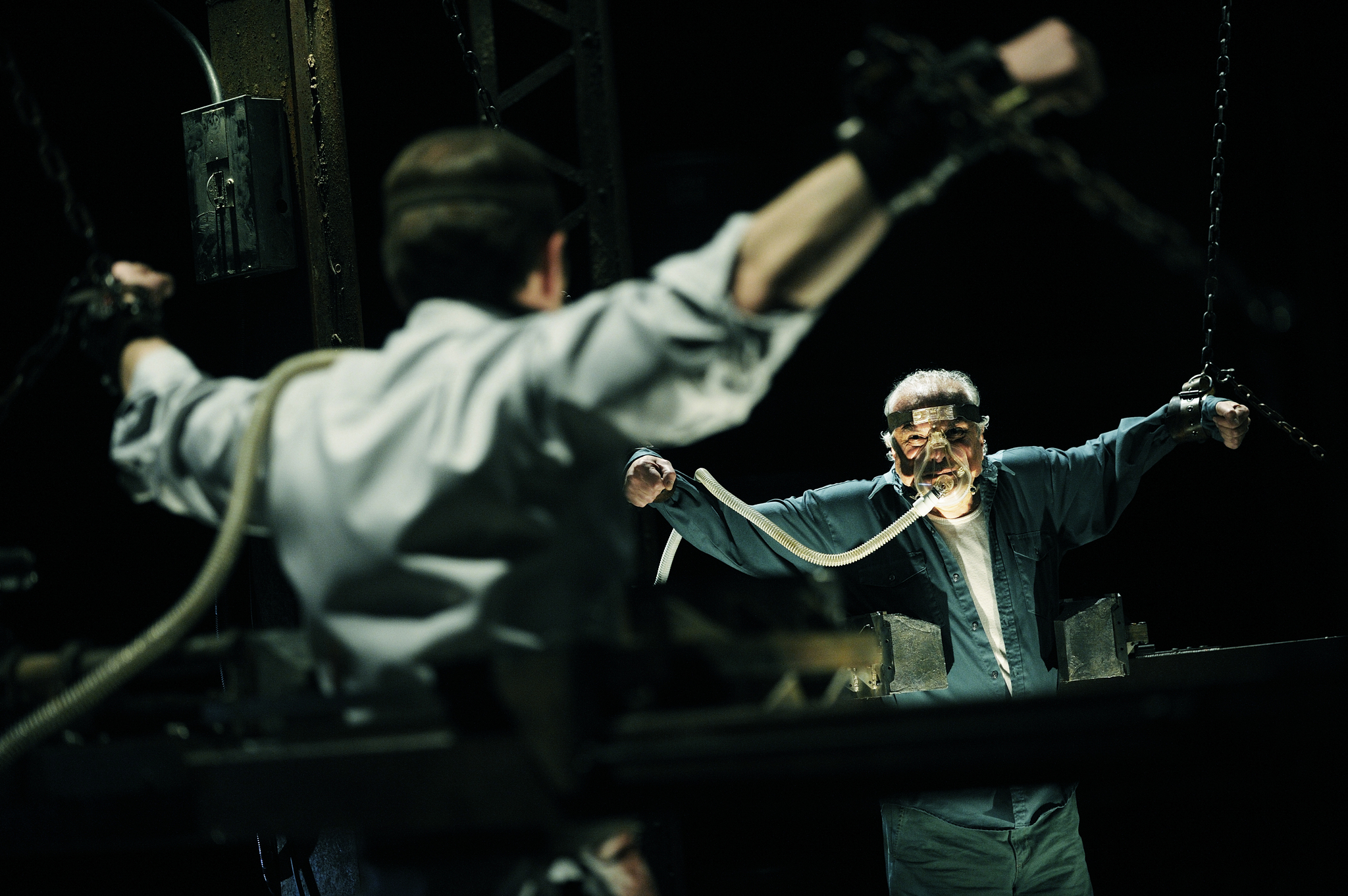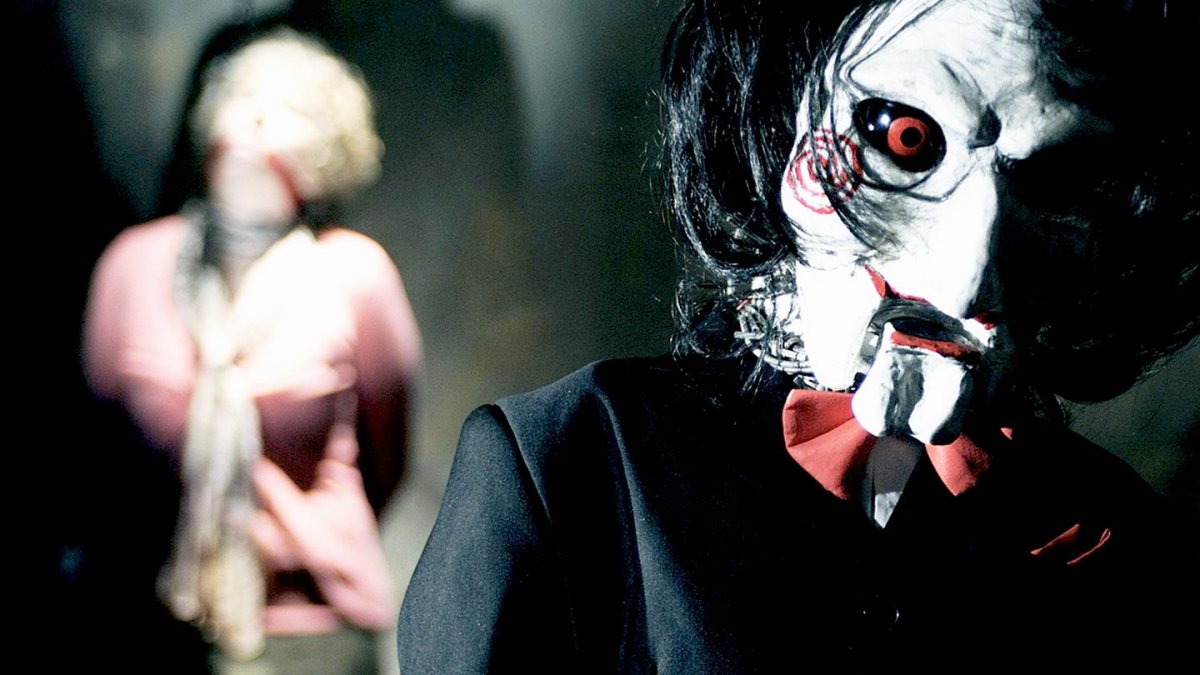Warning: This article on how Saw VI is the perfect early Obama era horror contains spoilers for the movie.
As horror movie franchises continue, they inevitably decline. Part of this is just the law of diminishing returns. Studios tend to cut budgets, ideas tend to run low, audiences tend to feel a bit tired. There is inevitably a point in every major horror franchise, from Halloween to A Nightmare on Elm Street, where the series seems to be sleepwalking towards oblivion. However, there’s always the chance to discover a diamond in the (very) rough. Occasionally, there’s a late masterpiece in the set.
Saw VI is notable for a number of reasons. The Saw franchise is perhaps best understood as an expression of the anxieties and uncertainties of the Bush era, but Saw VI was the first film in the franchise released after the end of the Bush Presidency. Perhaps cementing that idea of the Saw franchise as rooted in a particularly cultural moment, it was also the lowest grossing entry in the franchise until Spiral, beaten at the box office by Paranormal Activity in its fifth week.
Still, with the release of Saw X, Saw VI deserves another look. Most obviously, Saw VI marked the directorial debut of Kevin Greutert, who had edited the previous five films and who returned to the franchise to direct the latest installment, Saw X. More than that, the plot of Saw X concerns serial killer and death trap enthusiast John Kramer (Tobin Bell) exacting brutal vengeance upon healthcare professionals who tried to exploit him. In Saw VI, Kramer wreaks havoc on medical insurers.
The film certainly has its issues. Discussions of the Saw franchise tend to fixate on the violence and gore, overlooking the series’ incredibly complicated continuity. At times, the Saw movies feel like compilations of an extremely intense horror soap opera. Saw VI spends a lot of time on the battle between Detective Mark Hoffman (Costas Mandylor) and Kramer’s ex-wife Jill Tuck (Betsy Russell) over Kramer’s will and legacy. It wouldn’t take too much to rework it as a Days of Our Lives plot.
Related: What Happened to Jigsaw in The Saw Movies?
This subplot is by far the least engaging aspect of Saw VI. These scenes are obvious franchise-building, tying back to Saw V and setting up the inevitable Saw 3D. That film, also directed by Greutert, was sold as “the final chapter” and would be the last of the seven Saw movies released like clockwork every Halloween between 2004 and 2010. The Hoffman sequences are, by far, the weakest aspects of Saw VI, and the most significant qualification to be made with any recommendation of the splatter sequel.

Setting this issue, there is a lot to recommend Saw VI over many late-franchise horror installments. It appears to be a polarizing entry in the franchise. It is the third-highest-rated entry in the series on Rotten Tomatoes (with the release of Saw X this week knocking it down a position), but is the third-lowest going by Metacritic. However, time has been kind to Saw VI. With the benefit of hindsight, Saw VI stands apart from its contemporaries. There is a credible argument to be made that Saw VI is the best sequel in the franchise.
There are a couple of reasons for this, but the most obvious is that it reflects its moment. Saw VI arrived at a point where the Saw movies were being churned out on an annual basis. They needed to be written and produced relatively quickly, as Lionsgate wanted a new entry in theaters for every Halloween. In an industry where movies can languish in development hell or postproduction for years, this gives the Saw movies a strange sense of urgency and immediacy.
As such, it makes sense that Saw VI reflects the dramatic shift in contemporary American culture from Bush to Obama. The contrast between Saw V and Saw VI is as distinct as that between Christopher Nolan’s The Dark Knight and J.J. Abrams’ Star Trek. The earlier Saw movies spoke to anxieties about the War on Terror — not only in their depiction of graphic violence inflicted on human bodies but also in their emphasis on torture and the rhetoric of moral certainty.
Throughout the Saw franchise, Kramer reacts against what he sees as the apathy of the modern world. However, in the earlier films, he tends to fixate on individuals, imparting life lessons tailored to specific people: often drug addicts, criminals, lay-abouts. In line with the politics of the Bush era, Kramer advocated for an approach that seemed to place an emphasis on “personal responsibility.” This was reflected in his taunting catchphrase to each of his victims, “Live or die. Make your choice.”
There had been hints of a broader social conscience in Saw V, with the story built around a group of victims who had all been complicit – in one way or another – in a fire that killed eight people. Central to Saw V is the realization that the group could have survived if they had worked together as a collective rather than each prioritizing their individual security. This becomes a recurring theme and motif in Saw VI, which positions itself as the perfect horror for the early Obama era.
On some level, the idea of an Obama-era horror seems inherently absurd. Obama had won an election on the promise of “Hope” and “Change.” Obama campaigned on optimism, assuring supporters, “Yes We Can.” He rallied younger voters to his cause, driving electoral turnout to a 40-year high. It seems strange to imagine this as fodder for a horror story, but Saw VI is built around the twin narratives that dominated Obama’s first year in office: the bailout and healthcare reform.

Saw VI came out roughly a year after the financial crisis, as it was becoming increasingly clear that state support had helped the institutions rather than the citizens. Obama inherited an economy in freefall. The decision to bail out the banks was unpopular, with Frank Rich describing it as “Obama’s original sin.” These twin crises severely hindered Obama’s ability to deliver on the change that he had promised supporters, leading to what George Packer called “Obama’s lost year.”
There was palpable anger at the institutions that had betrayed the public. The controversy came to a head in March 2009 when insurance company AIG announced that it would pay $165 million in bonuses after receiving a $170 million bailout. The backlash was so aggressive that the company had to advise its staff to travel in pairs for their own safety. As such, it feels somewhat pointed that Kramer’s central target in Saw VI is William Easton (Peter Outerbridge), an executive at Umbrella Health insurance company.
Easton is the perfect subject for Saw VI, which released two weeks before the Affordable Health Care for Americans Act passed in the House. In debates about reform, Nancy Pelosi described insurance companies as “the villains in this.” In August 2009, Obama told PBS News Hour, “We are held hostage at any given moment by health insurance companies that deny coverage or drop coverage or charge fees that people can’t afford at a time when they desperately need care. It’s wrong.”
As Easton wanders the maze that Kramer has prepared for him in the hopes of saving his family, he is forced to make choices about who will survive and who will die. In his first trial, he must decide whether to save his secretary Addy (Janelle Hutchison) or his file clerk Allen (Shawn Ahmed). Next, he can spare his lawyer Debbie (Caroline Cave) her torment by taking it on himself. Finally, reflecting his company’s refusal to pay out two-thirds of claims, he can only save two of his six associates strapped to a deadly carousel.
Related: What Happened to Jigsaw in The Saw Movies?
Saw VI opens with a trap involving lenders Eddie (Marty Moreau) and Simone (Tanedra Howard). “The devices on your heads are symbolic of the shackles that you place upon others,” Kramer taunts them. “You recklessly loan people money, knowing their financial limitations, counting on repossessing more than they could ever pay back.” In what becomes a recurring motif of the film, Eddie and Simone find themselves in competition. Only one of the pair can survive.
This is very much in keeping with the mercenary style of American capitalism. Central to Saw VI is the idea that the system pits people against one another to ensure maximum suffering. When Easton is asked to save two of his six associates, they bargain, plead, and bicker for his favor. “I’m pregnant!” one insists. Another begs, “My parents are sick, okay? They need me. I’m all they have, please!” Yet another insists that these are lies. Everybody is scrambling over one another, for advantage.

When Easton releases Debbie from her cage, she discovers the key to the speargun pointed at her brain has been surgically placed inside Easton’s abdomen. With only seconds left on the clock, she grabs a saw and starts slashing desperately at Easton. “I need that fucking key!” she offers by way of justification, as he pleads with her to slow down and stop. She doesn’t get him fast enough; the spear fires upwards, piercing her skull.
Saw VI builds to a brilliant reveal. Throughout the movie, Easton’s journey through Kramer’s lair is cut against scenes of a middle-aged woman named Tara (Shauna MacDonald) and her teenage son Brent (Devon Bostick). They have woken up in a cell and are watching Easton’s progress. The inference seems to be that they are Easton’s family, and that he must reach them before the timer runs out. However, this is not the case. He is trying to reunite with his sister Pamela (Samantha Lemole).
Instead, Tara was married to Harold (George Newbern), a man who died after Easton refused to extend his coverage. The shocking reveal is that Easton was never the protagonist of this story, Tara and Brent were. “It’s not my game,” he gasps. Saw VI pulls the rug out from under the audience. The assumption was that the viewer was meant to root for Easton, to support him as he made those terrible choices in those traps. However, he made those choices selfishly – sacrificing others – to save himself and his sister.
Saw VI suggests that Easton isn’t so different from Kramer. In a way, Kramer’s terminal cancer diagnosis forces him to navigate a more abstract maze overseen by Easton. “Sounds like we’re in a similar business, John,” Easton quips when the two first cross paths, before Kramer’s reign of terror. After Easton explains his role at Umbrella Health, Kramer notes, “So, in a sense, you choose who lives or dies.” It’s not dissimilar from what Kramer does. After all, Kramer doesn’t consider himself to be a killer any more than Easton does, even if the outcome is the same.
Like many of the better Saw sequels, Saw VI is skeptical about Kramer and his outlook. When Simone survives that first trial, Hoffman asks whether she has learned her lesson. Pointing to her amputated arm, she demands, “What the fuck am I supposed to learn from this, huh? Look at my arm! What… What am I supposed to learn from this?” It points out the absurdity of Kramer’s rhetoric of personal responsibility, not too dissimilar to those employed in healthcare debates over risk factors.
While the conventional narrative is that the Saw franchise ceased to be relevant once the Bush era came to an end, Saw VI was a horror film that spoke to the emerging Obama era. It understands the rhetoric of individualism and personal responsibility can only go so far in confronting an increasingly apathetic society. The real horror lies in the systems that pit people against one another. Even those who believe they hold power, whether Easton or Kramer, are ultimately stuck in larger traps.
For more of Darren’s thoughts on the franchise, check out his exploration of Saw III as the ultimate “screw you” sequel.






Published: Oct 10, 2023 03:30 pm